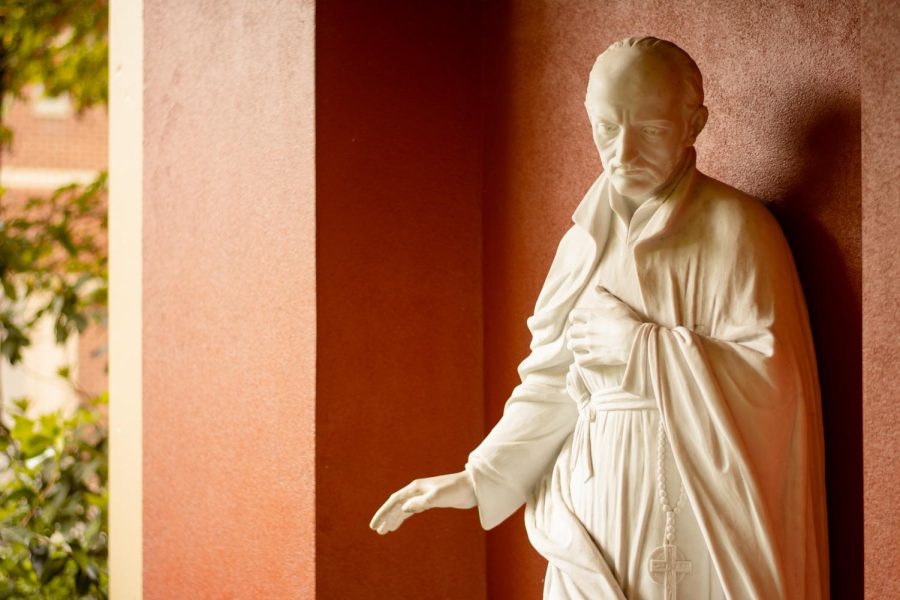Editorial Follow Up: “Just a Tad Jesuit: Seattle U Faculty Contest Handbook Changes”
A statue of St. Ignatius of Loyola on Seattle U’s campus.
Last week, The Spectator published a feature entitled “Just a Tad Jesuit: Seattle U Faculty Contest Handbook Changes.” In the article, several Seattle U faculty members make strong and mostly negative claims about the university’s Catholic Jesuit identity.
A May 16 statement from President Peñalver calls the article “unfortunate and one-sided.” The president’s reasoning is that the article did not offer a variation of faculty perspectives on the new language.
The Spectator always works to reach out to a diversity of sources when conducting coverage, as it did in the case of the contested article. The paper’s coverage in the piece is an accurate reflection of faculty opinions regarding the proposed language. In the Summary of Faculty Handbook Revisions and Feedback Document itself, faculty members make their concerns abundantly clear:
“One faculty member makes clear that they do not respect all Catholic religious, intellectual and cultural traditions, and therefore disagrees with the inclusion of ‘respect’ for Catholic religion.”
Another statement in that same document is even more clear about the position of the faculty:
“[Academic Assembly] representatives and faculty [are] concerned that this new language enhances the expectations and expands the university’s ‘religious culture and rules.’”
The president’s assertion that there were “some supportive, some concerned, and some strongly opposed” to the new Catholic language implies a balance of voices in the debate. The summary document does not include a single positive statement about the proposed language. In the interest of allowing readers to make their own assessments, The Spectator has attached every comment compiled by the Faculty Senate in their summary document to this article below.
A persistent negative attitude toward the Church permeates the faculty body. The Spectator views the Ignatian Catholic tradition as one of the university’s most valuable distinctions. At this university in particular, we have a remarkable opportunity to express the Catholic faith in a way that is often under-represented in popular discourse. We can show the world that embracing women, LGBTQ+ people, immigrants and people of all faiths are Catholic values. We can model to the Church how to be radically and inclusively Catholic—and how to follow Jesus’ call to minister to “the least of these” (MT 25:40).
Unfortunately, Seattle U’s faculty seems largely unaware of this potential. The Spectator did not cherry-pick sources with a negative outlook toward Catholicism. Rather, those were the sources most outspoken in the debate.
The Spectator applauds the president’s assertion that “the fact that Seattle University is Jesuit and Catholic is not itself an open question.” Peñalver has shown impressive leadership in furthering the university’s Jesuit mission, as have the provost and vice-president for mission integration.
However, the university cannot hope to further the Catholic and Jesuit identity of the school without a frank and honest assessment of the issue: anti-Catholicism is a problem in Seattle U’s faculty body.
As of the publishing of this editorial, the university chapel is still closed for 23 hours a day. Professors still feel comfortable calling progressive Catholicism oxymoronic. While The Spectator would love to report that Seattle U’s faculty are largely receptive to the university’s religious identity, to do so would be inaccurate. A presidential statement does not a Jesuit Catholic university make.
The Spectator will continue to serve as a forum for progressive Catholic journalism. We will continue to follow Catholic teaching by standing with the marginalized and excluded, and by highlighting the value of the Ignatian tradition to people of all faiths and backgrounds.
Ad majorem Dei gloriam.
Faculty Handbook Catholic Language Comments






